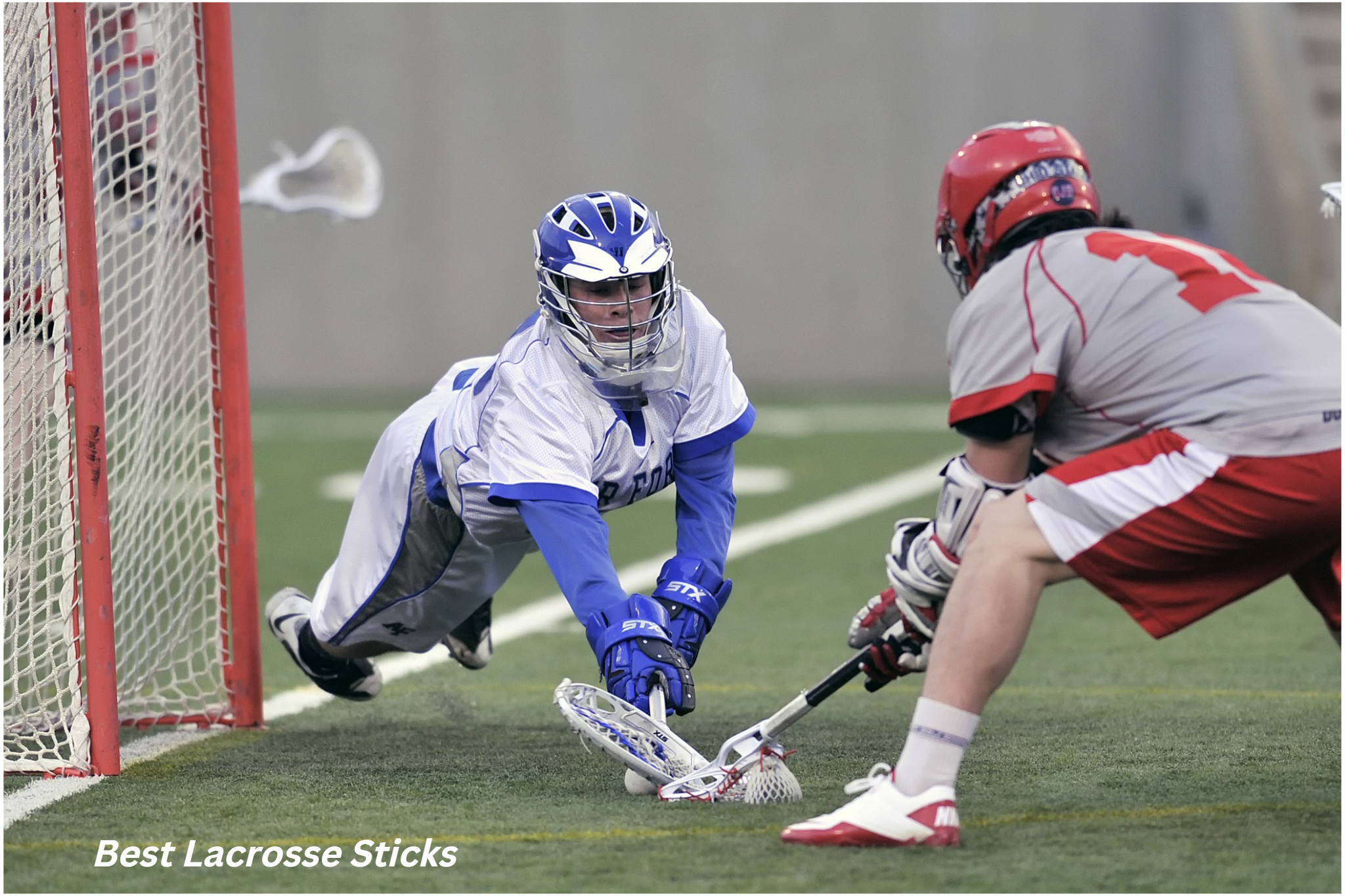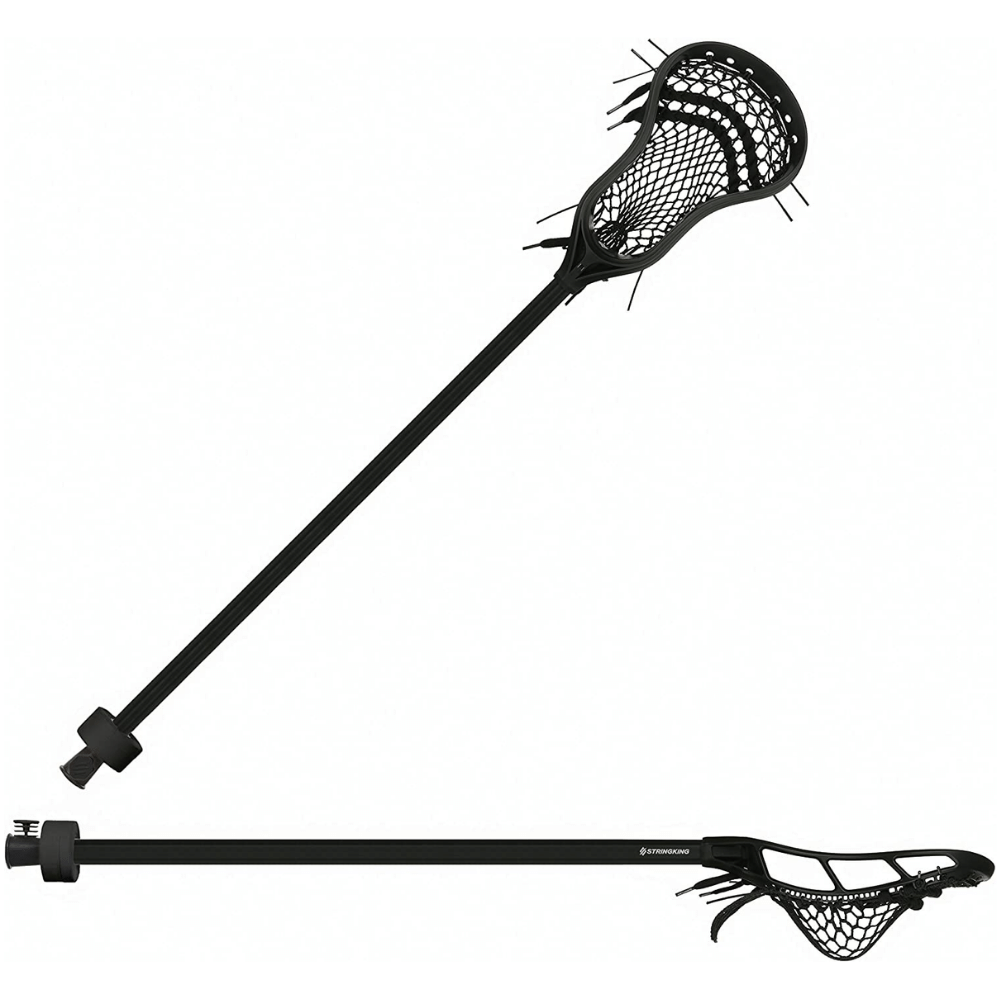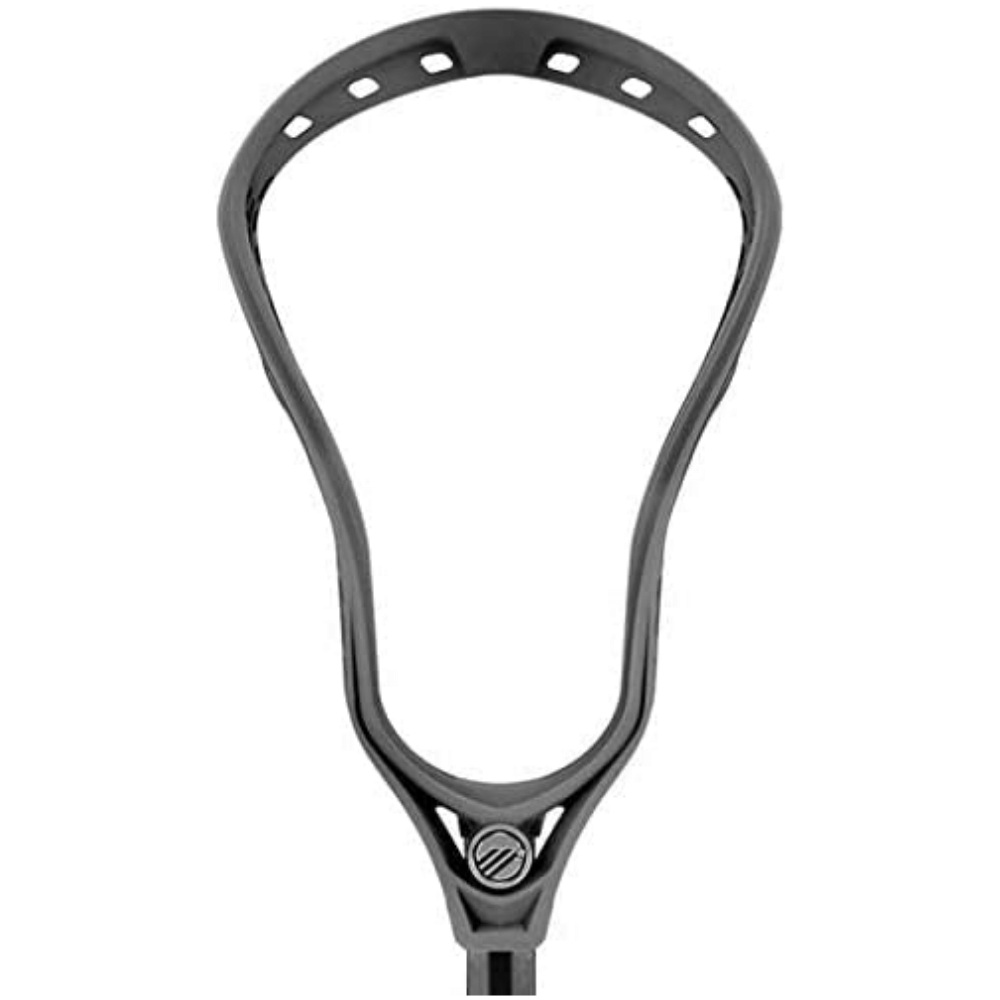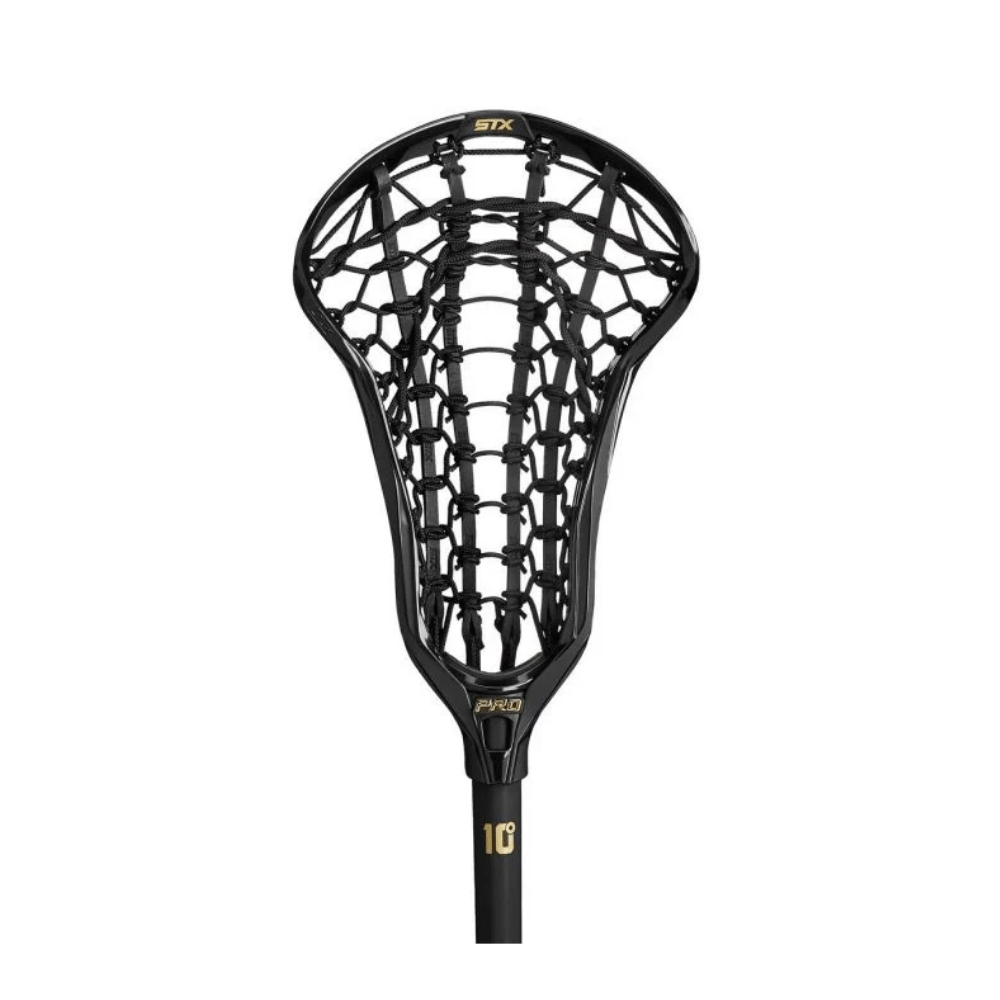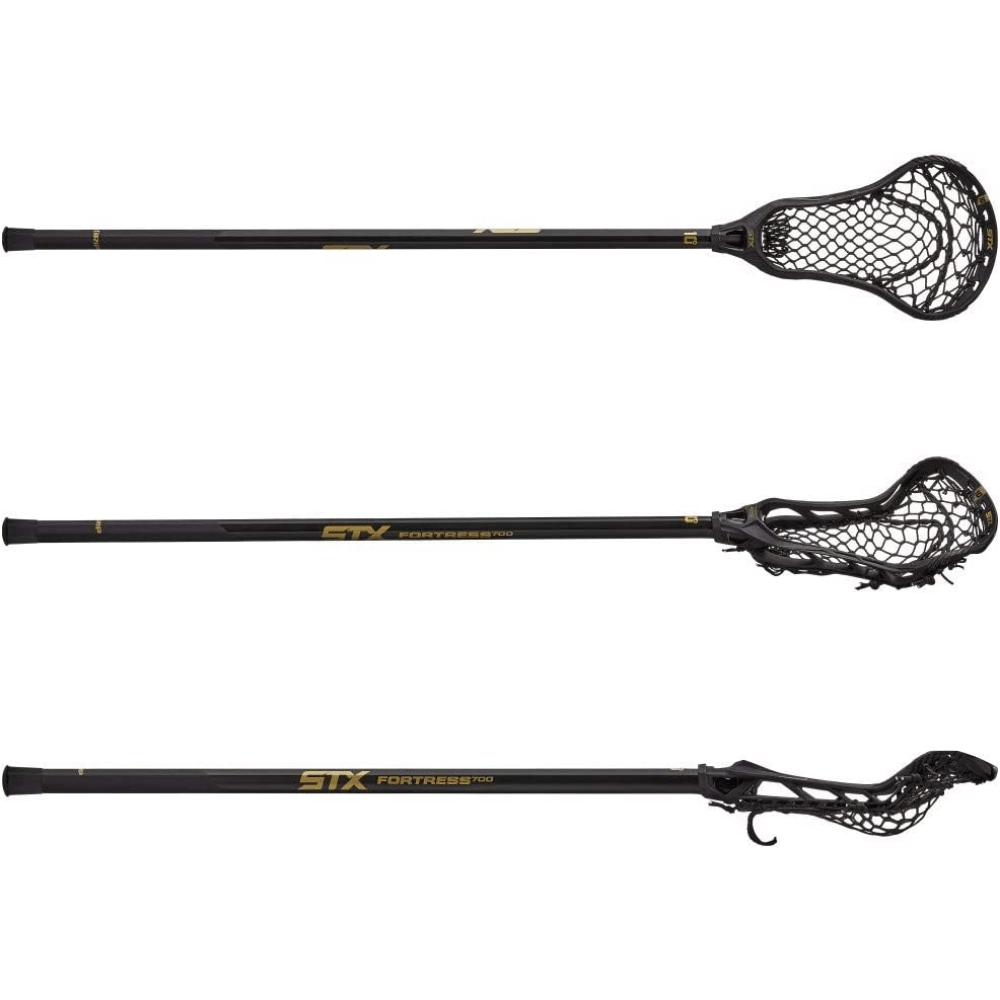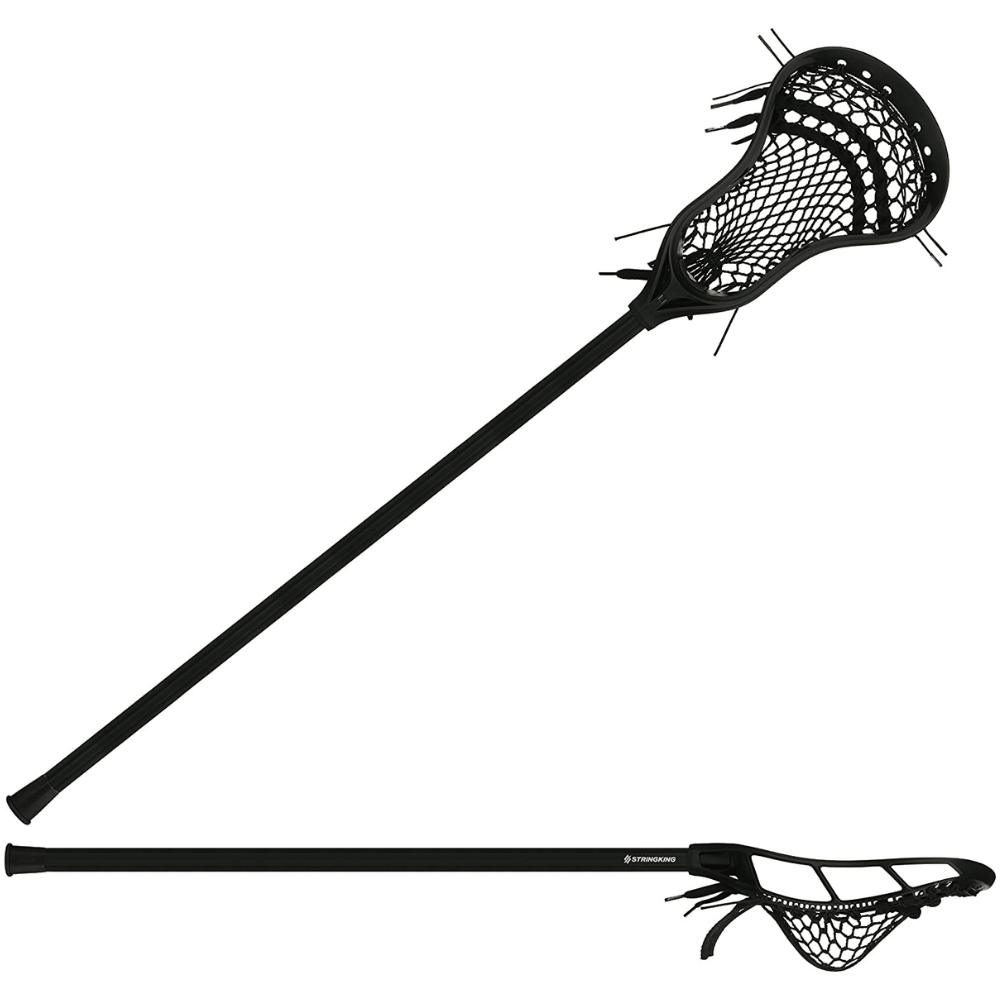We think we have found the best lacrosse sticks on the market. In this blog post, we will be discussing five of the best lacrosse sticks available, and why you should consider buying them. We'll also provide a few tips on how to choose the best lacrosse stick for your needs. So, let's get started!
You can't go wrong with any of these five lacrosse sticks. They are all high-quality choices that will help you improve your game. Choose the one that is right for you, and start scoring goals like a pro!
Once you've finished your review here, we hope you'll be ready to purchase "zBest" lacrosse stick from our website, today!
We hope you find the perfect solution for your shopping experience from our "Pick List," below! Each product was independently selected by our editors and all opinions in this article are our own. Oh, and BTW— zBestGuide may collect a share of sales or other compensation from the links on this page if you decide to buy something (that's how we stay in business). Reviews have been edited for length and clarity. Enjoy finding the right lacrosse stick for you!
First, Let's Set the Stage...
Native American Stickball, now known as Lacrosse, is probably the oldest sport in America, dating back to the 1400s, if not earlier. Developed by Native Americans (Algonquians) in the northeast part of North America and later spread to some of the plains Indians, the game was meant to toughen up braves for war and settle inter-tribal disputes. There were also some religious aspects to the game and it was referred to as the "Creator's Game."
In the early days of lacrosse, players used sticks that were made out of animal sinews and leather. The shape and construction of the stick had remained nearly the same for several hundred years.
In the 1860s Lacrosse, as a game, took a big step forward. William Beers, a Canadian dentist, established a set of rules and many schools and universities began to play. Yet sticks mainly remained the same.

Technology and Design
Really, it was not until the 1970s that the introduction of new technology and materials would revolutionize lacrosse sticks. Plastic heads were developed, converting what was once an entire lacrosse stick into two parts. And since the head was symmetrical all lacrosse players could play with the same lacrosse stick.
In the 1980s, aluminum shafts and synthetic mesh for pockets became leading innovations. Sticks became lighter which led to easier handling and faster shots. Mesh was also lighter and performed better in poor weather.
The extreme growth and popularity of lacrosse have pushed the design and innovation envelope of current lacrosse stick manufacture to new levels. Offset heads, composite shafts, and high-quality mesh variations have made lacrosse sticks even lighter, faster, and more accurate in passing and shooting.
Best Lacrosse Sticks- Factors to Consider
Side-Wall Pattern
It is important that your side-wall knot pattern be symmetrical. Side-wall strings are critical to pocket placement, depth, and hold, meaning the ability of the pocket to hold the ball under pressure.
Pocket Depth
Lacrosse stick pockets are important. Players adjust the pocket depth to affect their style of play depending on their position. Some lacrosse players want to possess the ball more, while others want the ball out quickly to pass or shoot.
Mesh Variations
How often you play and under what conditions will dictate your choice of mesh options. High-performance mesh can make a difference, as well, so you'll want to explore what might work best for you.
Top String and Sidewalls
Look to be sure your top string and sidewall strings are taught. If they are slack the shape of your pocket will begin to shift and you'll experience inconsistencies in ball control. Many times, this issue does not materialize until the stick is broken in. Always work to maintain tight top and sidewall strings so you can count on your lacrosse stick at all times.
Best Lacrosse Sticks
Lacrosse is a great sport, but it can be tough to know which lacrosse stick is the best for you.
There are a lot of different lacrosse sticks on the market, and finding the right lacrosse shafts, lacrosse heads, and pockets can be a challenge. With so many choices, how can you be sure that you're getting the best lacrosse stick for your needs? Be sure to consider your player position, as well.
You could search through thousands of reviews and star guides, but that could take forever.
zBestGuide has already searched and read all of the top reviews on lacrosse sticks so you don't have to. We've limited ourselves to 5 top-quality possibilities that are worthy of your consideration, so check out our "Pick List" to see which one might be right for you. We added some useful tips and helpful hints, too. Ready, set... Get started!
zBestGuide's Summary "Pick List:"
StringKing Senior Complete 2 (Best Men's Offensive Stick)
Maverik Tank 2.0 Head (Best Men's Defensive Head)
STX Women's Crux Pro Elite (Best Women's Offensive Stick)
STX Women's Fortress 700 (Best Women's Defensive Stick)
StringKing Complete 2 Junior (Best Youth Lacrosse Stick)
"Pick List" Details:
StringKing Senior Complete 2 (Best Men's Offensive Stick)
The Particulars:
- Alloy shaft
- Legend head
- Type 3 mesh
- Ball Control
Why We’re Impressed
Check out the StringKing Senior Complete 2. This premium lacrosse stick is designed for elite performance, with a durable alloy shaft and an elite head that can help you take control of the field. Whether you're playing Attack looking for more power or a defensive player who needs extra durability, the Complete 2 Senior is the perfect choice for you. With four different versions available, there's sure to be an ideal fit for your age, position, playing style, and budget.
Here's the inside Story
This stick comes perfectly strung with Type 3 mesh (semi-soft), so it's ready for game time right out of the box. There's no break-in period or complicated maintenance required - just pick up and play. Grabbing ground balls never got better.
The thicker side rail design enhances the integrity of the head for added durability. Stiffer construction provides superior ball control during ground ball pickups and a slightly narrow face shape keeps the ball secure in the pocket for superior control. Also, the innovative locking bolt eliminates head rattle.
Maverik Tank 2.0 Head (Best Men's Defensive Head)
The Particulars:
- Ground Control scoop- Ground balls
- X-Rail Technology (New)
Why We’re Impressed
The Maverik Tank 2.0 is one of the best lacrosse heads from Maverik Lacrosse, and it's their stiffest head yet. You'll see elite-level close D guys using this head to go up against their worthy opponents. It's built to perform at the highest level and with the updated ground control scoop, you'll win almost all the ground balls.
Here's the inside Story
The Tank 2.0 head is designed with 6-strut X-rail Technology for stiffness and strength, making it perfect for lift, poke, and slap defense. The face shape is also designed for close-in defensive battle, providing protection in the air and on the ground. Just add a top-rated lacrosse shaft and you're in business.
STX Women's Crux Pro Elite (Best Women's Offensive Stick)
The Particulars:
- Lightest Head
- New EnduraFoam for toughness
- STX Offset Head
- Crux Mesh 2.0 or Proform
Why We’re Impressed
The STX Women's Crux Pro Elite is a top-of-the-line lacrosse stick. It features STX EnduraForm™, a new, proprietary formulation improved for toughness in a wider array of temperatures. The Crux Pro has been upgraded for the ultimate in control, precision, and accuracy for elite attackers. Its new, minimal design makes it the lightest Crux head in the history of the line.
Here's the inside Story
Innovative STX DropRail™ technology minimizes sidewall design for superior ball control and a wider range of motion. STX Speed Scoop™ technology provides top string protection, as well as improved ground ball pick-up. And, of course, remember STX-exclusive Offset Technology which naturally drives the lacrosse ball to the highest part of the pocket for quick release and the best ball feel in the game.
STX Women's Fortress 700 (Best Women's Defensive Stick)
The Particulars:
- Full-range Speed Scoop™
- Deeper pocket- Ball Control
Why We’re Impressed
The STX Women's Fortress 700 on Composite 10 Complete Lacrosse Stick is engineered with added strength for the elite defender. The face shape is designed with a narrow pinch for improved ball retention and a wide scoop for catching. The patented 10° technology provides increased power and accuracy while making it easier to control the stick. The result is a complete lacrosse stick that is perfect for the advanced player looking to take their game to the next level.
Here's the inside Story
We like the fact that the Fortress 700 features reduced sidewall height allowing for a deeper pocket. This feature makes it much easier to move the ball up the field, without sacrificing any of the stick's strength. Additionally, the strike plates on this lacrosse stick let the player deliver checks with increased power. As a result, you'll be able to dominate the opposition and take your game to the next level.
StringKing Complete 2 Junior (Best Youth Lacrosse Stick)
The Particulars:
- Thin, light shaft
- Legend junior head
- Type 3 mesh
Why We’re Impressed
The StringKing Complete 2 Jr. youth lacrosse stick is the perfect choice for youth players who are just learning the fundamentals of the game. The pocket is perfectly strung with Type 3, semi-soft mesh for consistent, worry-free performance, and the stick is designed from top to bottom to help youth players enjoy the game. With its easy-to-use design and top-notch performance, the Complete 2 Jr. youth lacrosse stick is a great choice for any young player.
Here's the inside Story
We like that StringKing has thought of everything for the youth players. The shaft is thinner, thus accommodating smaller hands. The weight of the head has been adjusted so that the stick has an overall good weight and balance, similar to a full-sized lacrosse stick. These thoughtful adjustments will make sure that entry-level players learn the basics and most importantly enjoy the game from the start.
Best Lacrosse Sticks on the Market FAQs
Lacrosse is a great sport but NFHS or NCAA rules and regulations may be new to you. If that's the case, it may be hard to know where to start when choosing a lacrosse stick.
There are so many different types of lacrosse sticks on the market, and it can be hard to know which one is right for you. Do you need a carbon fiber shaft or an aluminum one? A short stick or a long pole?
Our guide to the most Frequently Asked Questions about Lacrosse Sticks will give you some direction and help you make sense of the many options. We've developed a "Pick List" of 5 of the best sticks on the market. We hope this will help you figure out what type of lacrosse stick and component options are best for your playing style.
How much should I spend on a lacrosse stick?
It depends on your skill level. For beginners, we would recommend spending about $50 on a lacrosse stick. If you are more experienced, you could spend up to $200 on a top-of-the-line stick.
Lacrosse is a sport that takes some time to learn, so it's important not to overspend on equipment in the beginning. That said, there are some great sticks available in the $50 range, and they will work just fine for beginner players. If you're looking for something that will last longer and offer more advanced performance, then you're looking at spending more money.
What type of mesh is best for a lacrosse head?
In a Stringers Society Community survey, 86% of respondents prefer ECD Semi-Soft vs ECD Semi-Hard and 63% of respondents prefer ECD Semi-Soft vs StringKing Type 4s; making ECD Hero 3.0 Semi-Soft the most preferred lacrosse mesh.
Why are lacrosse sticks so expensive?
There are several reasons lacrosse sticks are more expensive. Materials and workmanship will account for much of the cost.
Having said that, if you buy the stick components i.e. head, stringing kit, and shaft, all separately then the individual parts are likely to be more expensive than complete sticks that are off-the-shelf. Your price will depend on the quality and potential performance characteristics of the individual parts of a stick you assemble and string yourself versus a generic stick you'll find at the sporting goods store.
Beginners are better off with a generic stick and minimizing their expense until they get a feel for the game and more importantly, decide what position they want to play. Whereas, advanced players, who are sure of their position and skill level, are more familiar with what type of head, shaft, and/or pocket will deliver the results they're looking for.
Is lacrosse an expensive sport?
Yes, lacrosse can be an expensive sport. Equipment, such as sticks, helmets, and pads can be costly. Depending on new or used equipment to begin, expect to spend $100 to $300. For elite players, one could spend as much as $1000+. In addition, club and travel teams often require players to pay fees for participation.
However, there are a number of ways to reduce the cost of lacrosse equipment. For example, many communities have youth leagues that offer affordable rates and equipment rental programs. Many times youth league organizers assist parents to connect with one another to swap equipment as beginners move up or outgrow their gear.
Alternatively, sporting goods stores often have sales on lacrosse gear throughout the year and there are good alternatives for quality used/refurbished equipment.
Is Lacrosse an easy sport?

It can be easy or difficult, depending on the person. For someone with a lot of athleticism and experience in sports, lacrosse can be easy because they have the skills and reflexes to make the game look effortless. But for someone who is not as athletically inclined, lacrosse can be more difficult because it requires quick reflexes and good hand-eye coordination.
Overall, lacrosse is a fairly simple sport once you learn the basics. The challenge lies in mastering the skills required to play at a high level. So if you're looking for a sport that is relatively easy to learn but has the potential for difficulty based on your skill level, then lacrosse may be a good fit for you.
What is the stick called in lacrosse?
A lacrosse stick is traditionally called a "crosse" in Canada and the United States. However, the word "crosse" is of French origin and is not commonly used in other English-speaking countries. In Australia, the word "stick" is more commonly used to describe a lacrosse stick.
What kind of stick do Midfield players use in lacrosse?
Midfielders and Attack use a short stick that measures between 40 and 42 inches in length from the top of the stick head to the bottom of the end cap. This gives those players improved ball control and handling.
What kind of stick do Defenders use in lacrosse?
Defensive players use a long stick ("pole") that measures between 52 and 72 inches in length from the top of the stick head to the bottom of the end cap. The long stick makes it much easier to reach to scoop ground balls or poke-check opponents and keep the offensive player further away from the goal.
Goalies use a stick that, by rule, must measure between 40 and 72 inches in total length, while the head of the goalie stick must be between 10 and 12 inches at its widest point. Many goalies today have begun to use shorter overall sticks for maneuverability and as their athleticism allows.
Why do women's sticks have no pockets?
The reason women's lacrosse sticks do not have a deep pocket goes back to the rules. Since there is no aggressive checking as in the men's game, there is less need for a deeper pocket.
Are all women's lacrosse sticks the same size?
The size of your stick will depend on the position you play. Players in the field will have a stick that is between 35 ½” and 43 ¼”. A goalie's stick can be larger, between 35 ½” and 52″ long.
What size lacrosse stick is best for youth?
For youth lacrosse sticks it is generally recommended that younger players in Grades K-4 should use a stick 37 inches in length. Grades 5-8 should use a stick 40 inches in length. Grades 5-8 defensive players should talk to their level coordinator before purchasing a defensive shaft.
Overall, the best youth lacrosse sticks are the ones that younger players are most comfortable with. Advanced sticks will come later.
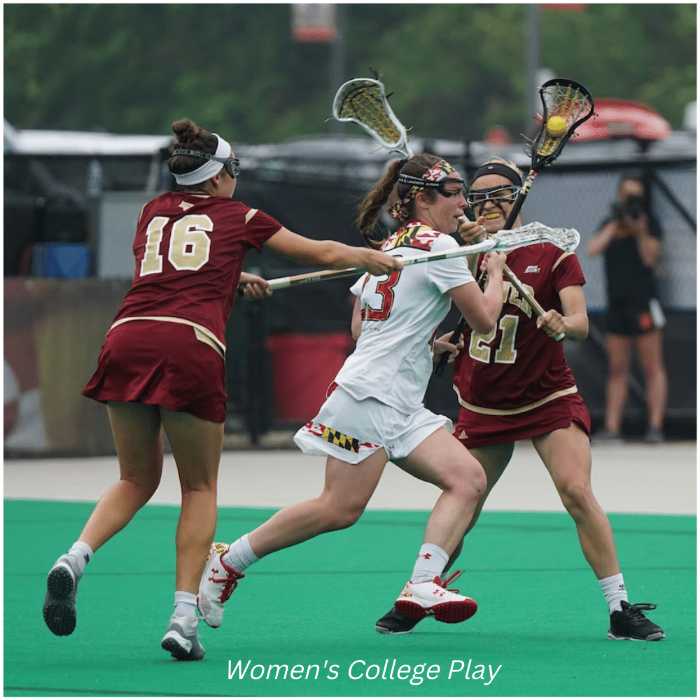
May we say in conclusion...
So, what’s the best lacrosse stick on the market? It really depends on your personal preference or needs as a player. This guide is for beginners, those just getting started, and advanced players working on position and skills. Take your time and do your research.
After reading hundreds of reviews and spending dozens of hours comparing different sticks, we’ve found some great options for each type of player. Now it’s time for you to take that final step and find the best stick. Be sure to tap the button to check prices and see what's available today. Come join the lacrosse world. We think you will be pleased with what you find!
Thanks for spending time with zBestGuide and happy shopping! 👇



